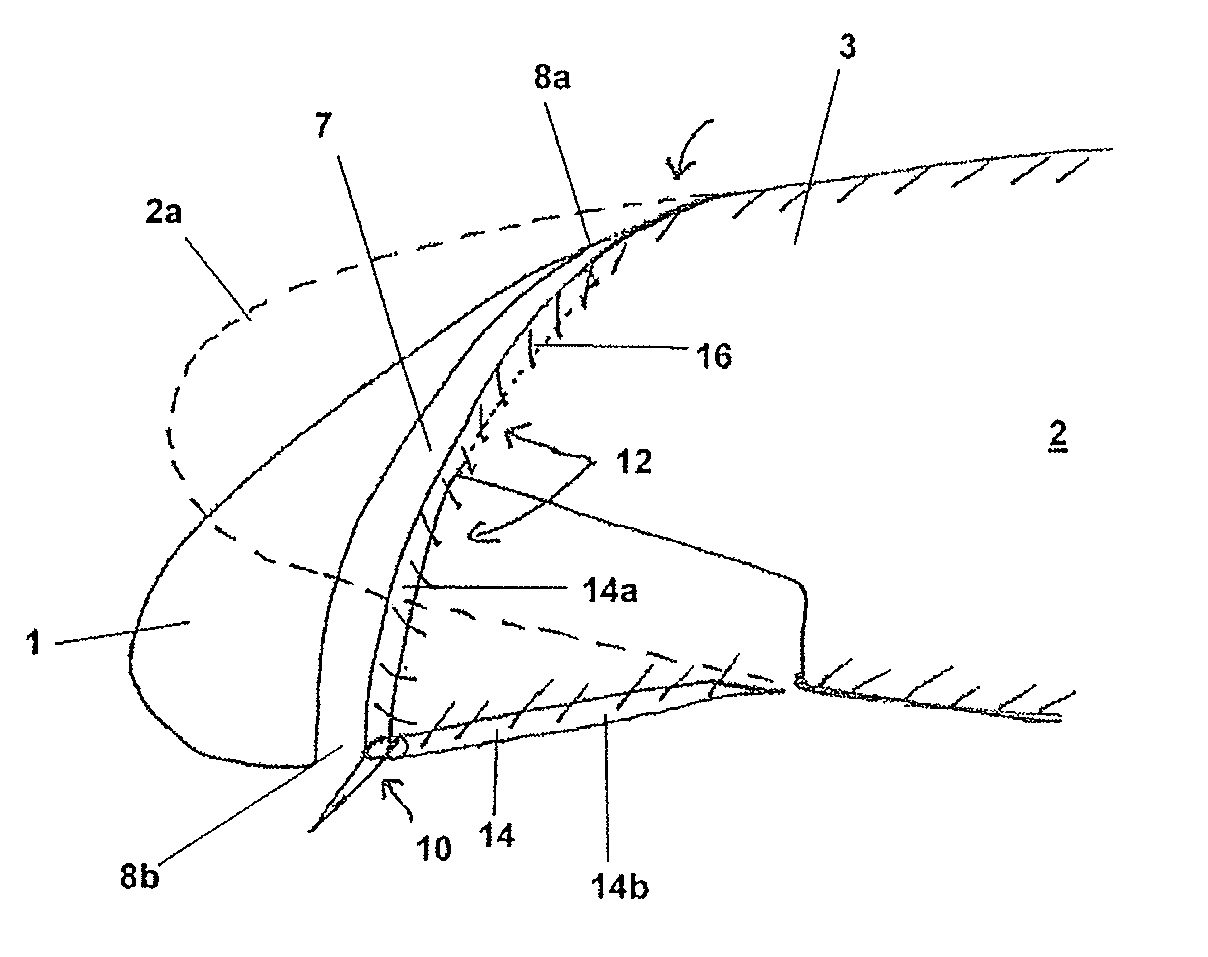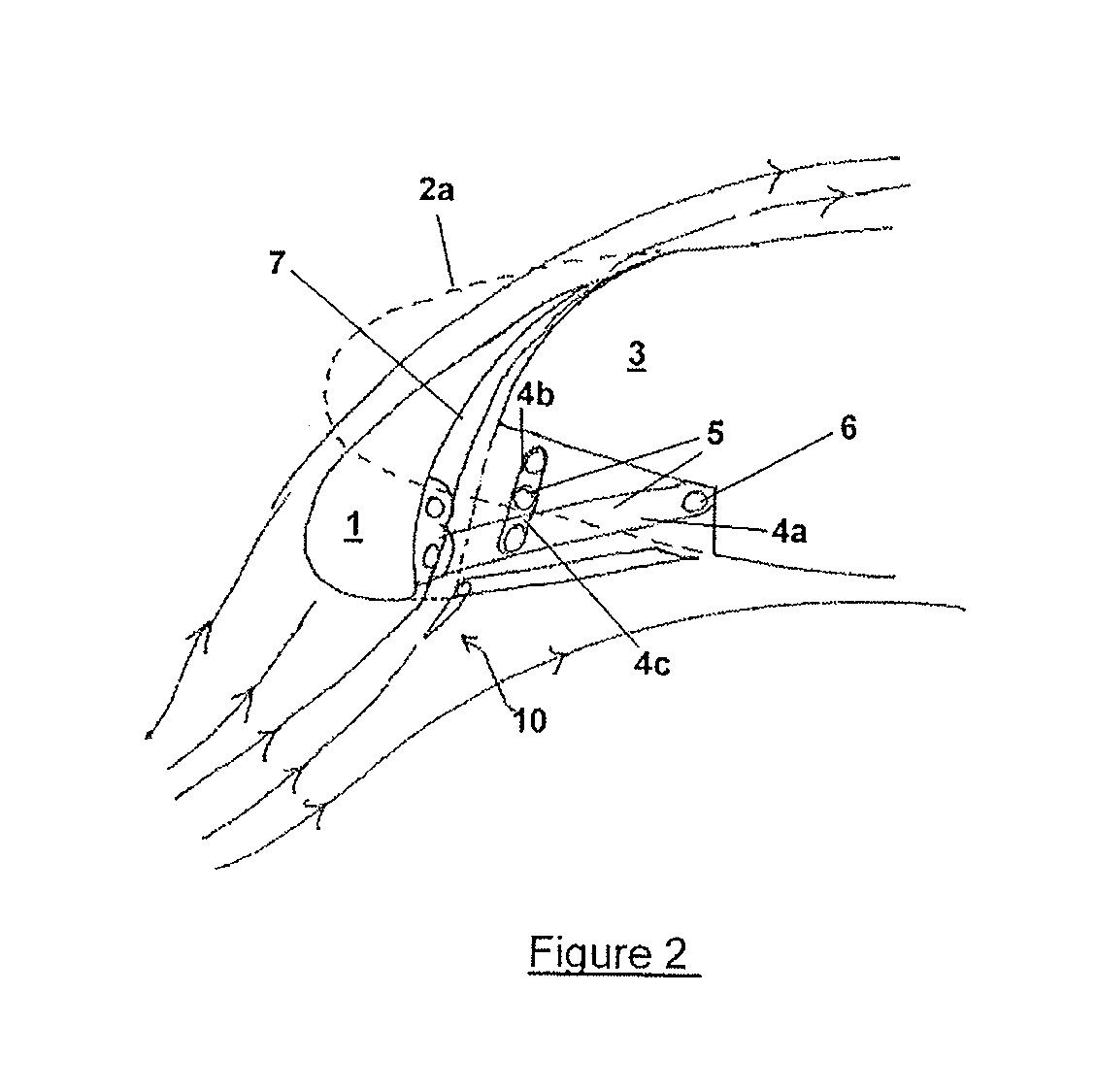Leading edge device for an aircraft
- Summary
- Abstract
- Description
- Claims
- Application Information
AI Technical Summary
Benefits of technology
Problems solved by technology
Method used
Image
Examples
Embodiment Construction
[0052]FIGS. 1 and 2 show a droop nose high-lift device 1 which forms part of a wing 2, only the leading edge section of which being shown. It will be appreciated that the wing section illustrated could form part of a larger component for example the whole of the wing or could be a separately manufactured section of wing that is fitted to the rest of the wing during assembly of the aircraft. The rest of the wing may for example be as shown in the aircraft illustrated in FIG. 5. The droop nose high-lift device 1 is attached to the adjacent main wing body portion 3, via a hinge mechanism 5 (shown in FIG. 2). The droop nose high-lift device 1 is moveable between a stowed position and two principal deployed positions. Both Figures illustrate the droop nose high-lift device 1 in the first deployed position adopted during landing, which in this embodiment is achieved by means of a 25 degree downward rotation of the droop nose high-lift device from the stowed position. During take-off, the ...
PUM
 Login to View More
Login to View More Abstract
Description
Claims
Application Information
 Login to View More
Login to View More - R&D
- Intellectual Property
- Life Sciences
- Materials
- Tech Scout
- Unparalleled Data Quality
- Higher Quality Content
- 60% Fewer Hallucinations
Browse by: Latest US Patents, China's latest patents, Technical Efficacy Thesaurus, Application Domain, Technology Topic, Popular Technical Reports.
© 2025 PatSnap. All rights reserved.Legal|Privacy policy|Modern Slavery Act Transparency Statement|Sitemap|About US| Contact US: help@patsnap.com



